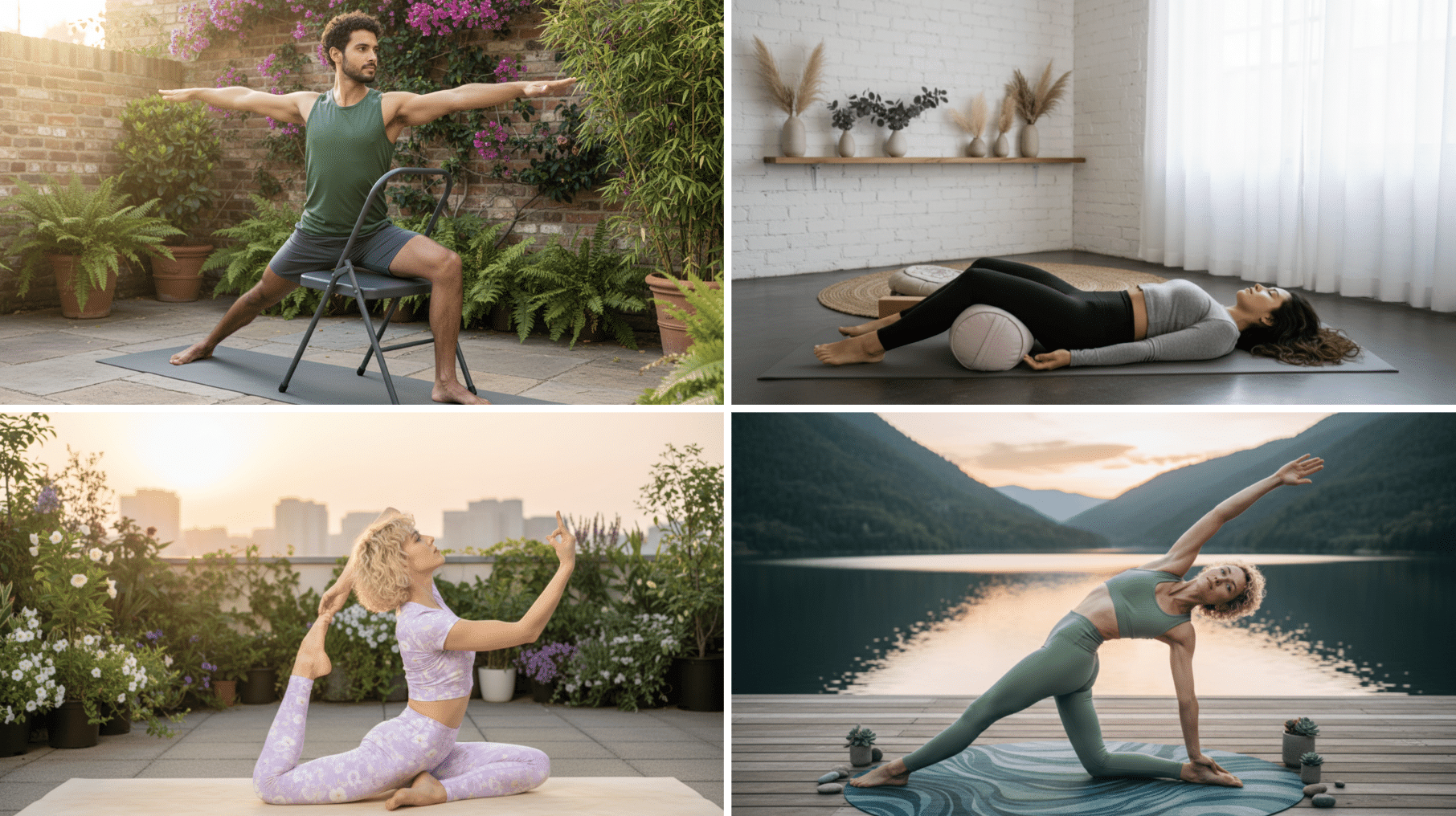Looking for the perfect yoga practice but feeling overwhelmed by all the options?
You’re not alone! With so many different styles out there, from sweaty Power Yoga to blissful Restorative sessions, it’s easy to feel lost before you even roll out your mat.
Maybe you’ve tried a class that left you either bored or completely intimidated, wondering if yoga just “isn’t for you.”
Here’s the thing: there’s a yoga discipline that matches your personality, fitness level, and goals perfectly.
In this blog, I’ll walk you through different types of yoga so you can finally find your ideal practice and fall in love with yoga on your own terms.
What are Yoga Disciplines?
When we talk about yoga disciplines, we’re basically talking about different flavors of yoga. Just like ice cream comes in vanilla, chocolate, and mint chip, yoga comes in gentle, intense, spiritual, and athletic varieties.
These disciplines differ in several key ways:
- Physical Intensity: Some will have you flowing like a dancer, others will have you holding poses like a statue.
- Breathing Techniques: From simple inhale-exhale to elaborate patterns that sound like ocean waves.
- Philosophy: Some focus purely on the physical, while others get deep into spiritual teachings.
- Pace and Structure: Think slow and meditative versus fast and energizing.
Types of Yoga Disciplines to Follow
1. Hatha Yoga
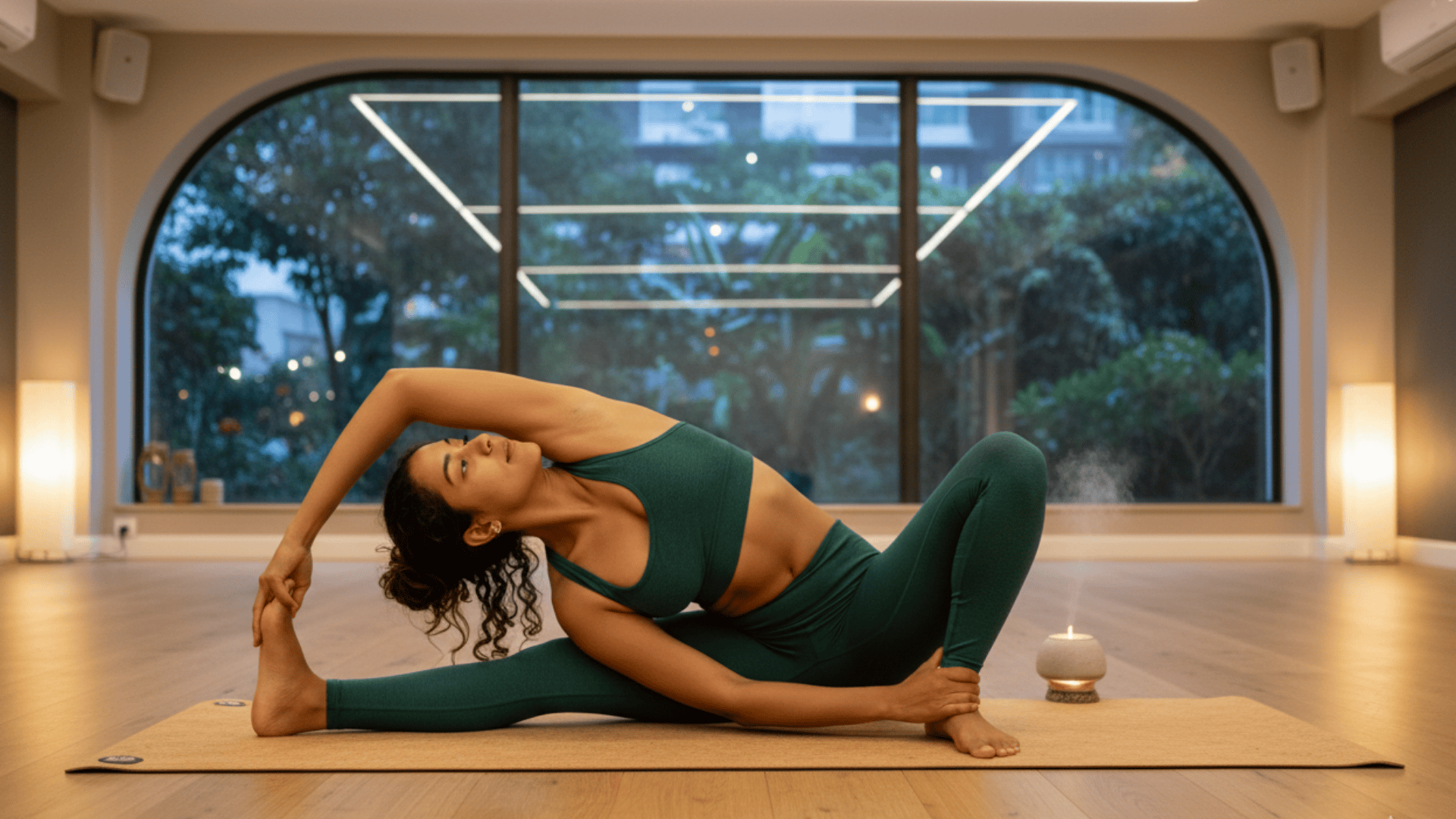
Think of Hatha as yoga’s friendly introduction. This gentle style focuses on basic poses that you’ll hold for several breaths, giving you time to really understand what your body is doing.
It’s like learning to walk before you run, except you’re learning to stretch before you flow.
The breathing is simple and natural, and there’s no rush to get anywhere fast. Perfect for beginners or anyone who wants to slow down and really connect with their practice.
Benefits: Stress melts away like butter on warm toast, your body learns to relax, and it’s incredibly beginner-friendly.
2. Vinyasa Yoga

If Hatha is a leisurely stroll, Vinyasa is a graceful dance. This flow-based style links your breath with movement, creating sequences that feel almost choreographed.
One moment you’re reaching toward the sky, the next you’re folding forward like a closing book.
Classes are often set to music, and no two classes are exactly alike. Your instructor might surprise you with creative sequences that engage both your body and mind.
Benefits: You’ll build strength without realizing it, increase flexibility naturally, and develop a moving meditation that feels good.
3. Ashtanga Yoga
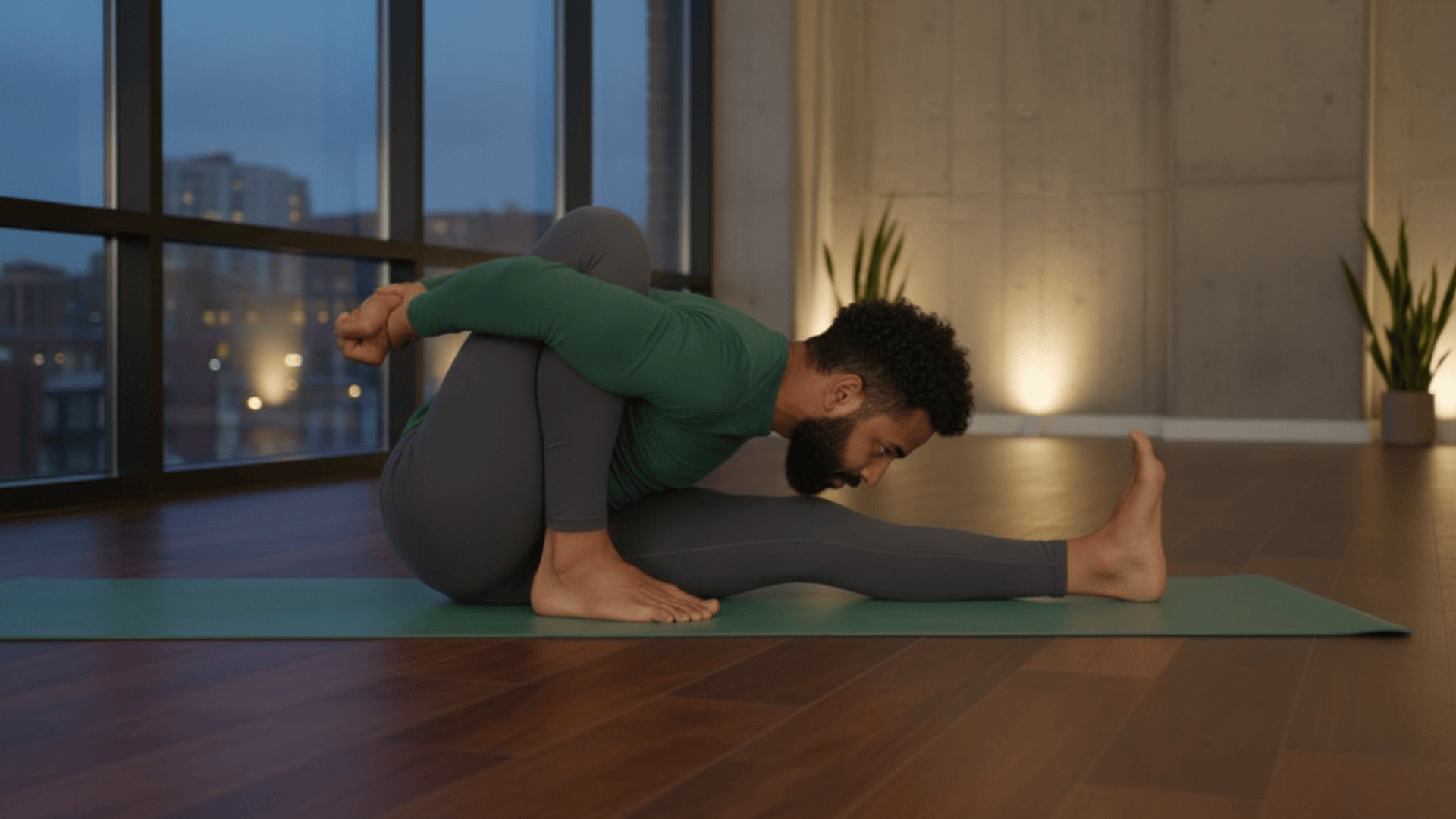
Ashtanga is yoga’s answer to a structured workout routine. This traditional practice follows the same sequence of poses every time, much like yoga’s greatest hits album that never changes.
It’s intense, athletic, and definitely not to be taken lightly.
You’ll move through poses with precision and power, building heat in your body through the flowing movements. It’s challenging but incredibly rewarding once you get into the rhythm.
Benefits: Your endurance will improve dramatically, you’ll build serious strength, and your balance will become rock-solid.
4. Iyengar Yoga
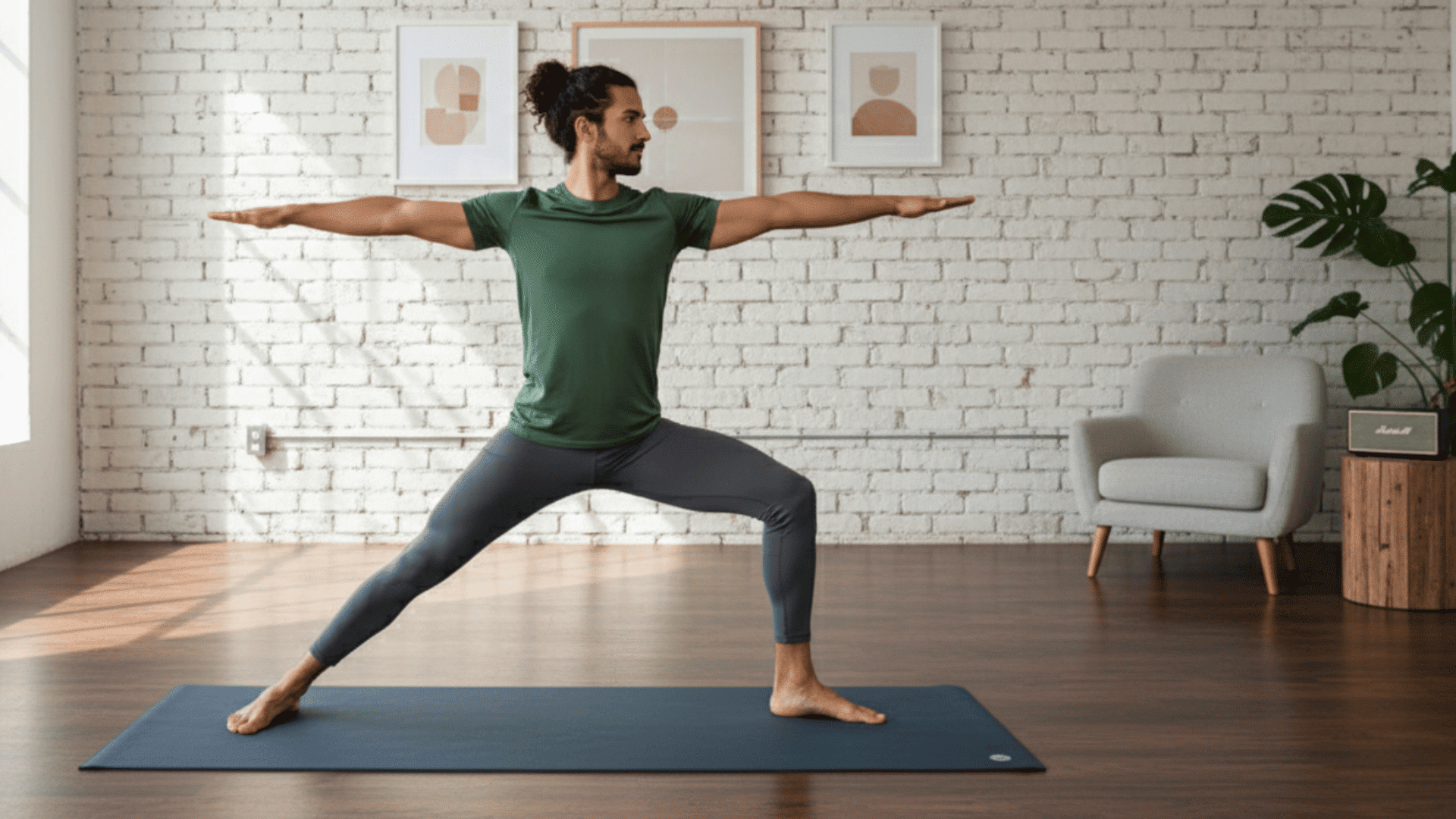
Iyengar is all about getting things just right. This precision-focused style utilizes props such as blocks, straps, and bolsters to help you achieve perfect alignment in each pose.
Think of it as yoga with training wheels, except the training wheels actually make you stronger.
Your instructor will pay attention to every detail, from how your feet are positioned to where your shoulders are sitting. It might sound nitpicky, but the results are incredible.
Benefits: Your posture will improve noticeably, alignment issues will be corrected, and it’s fantastic for rehabilitation and injury prevention.
5. Kundalini Yoga
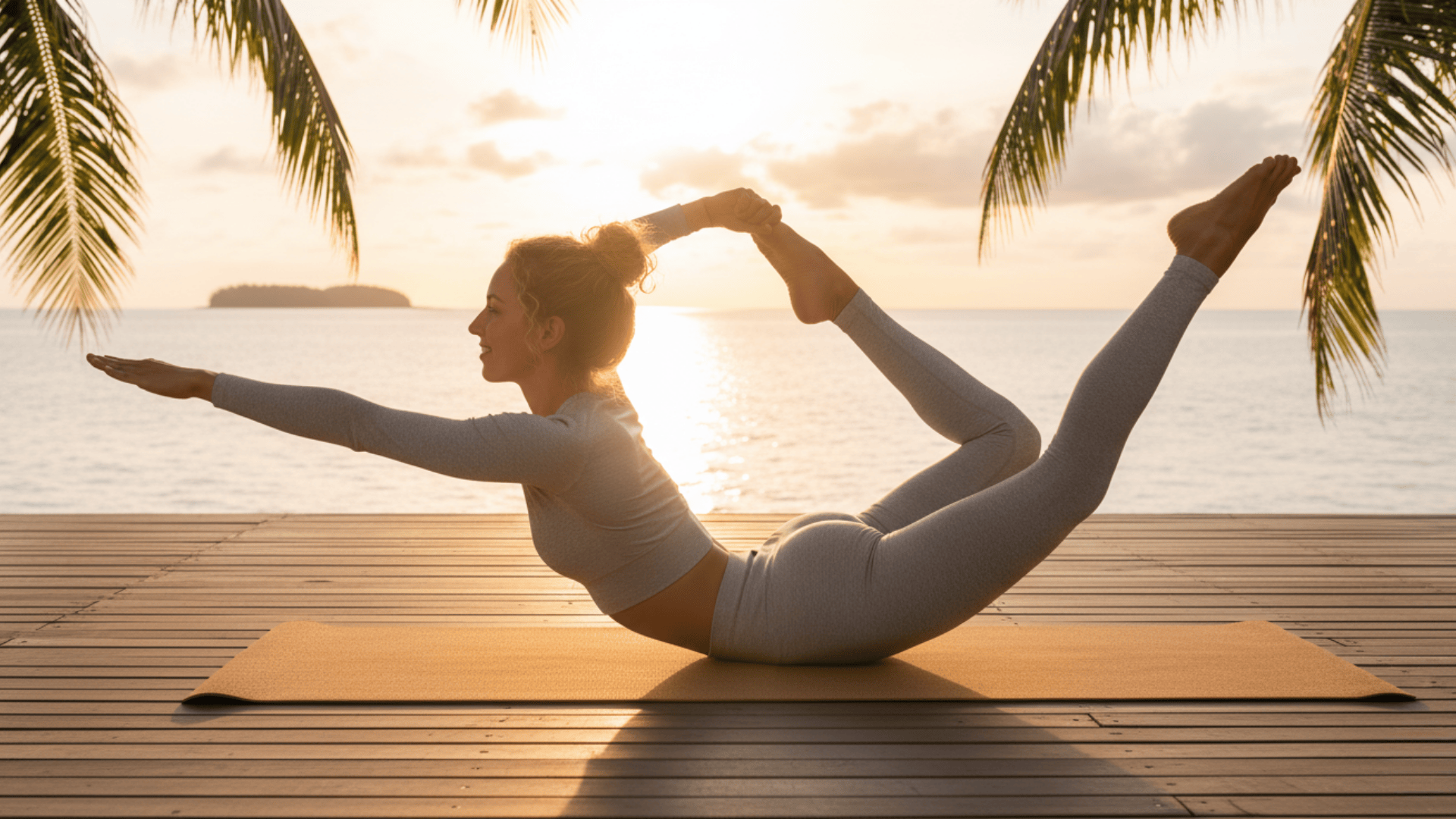
Kundalini is yoga’s spiritual cousin who’s really into meditation and chanting. This unique practice combines physical movement with breathwork, mantras, and meditation to awaken your inner energy.
You might find yourself doing repetitive movements while breathing in specific patterns and chanting sounds that feel foreign at first but oddly soothing after a while.
It’s definitely different, but many people become absolutely devoted to it.
Benefits: Your awareness expands, energy feels cleaner and brighter, and you develop incredible mental strength.
6. Bikram Yoga

Bikram is hot yoga’s original formula: 26 specific postures practiced in a room heated to about 105°F with high humidity.
It’s like doing yoga in a tropical rainforest, except the rainforest has mirrors and everyone’s wearing as little clothing as legally possible.
The sequence remains constant, allowing you to track your progress over time. Yes, you’ll sweat buckets, but many people find it oddly addictive once they adjust to the heat.
Benefits: Deep detoxification through sweating, potential weight loss, and incredibly deep stretching thanks to the heated muscles.
7. Hot Yoga
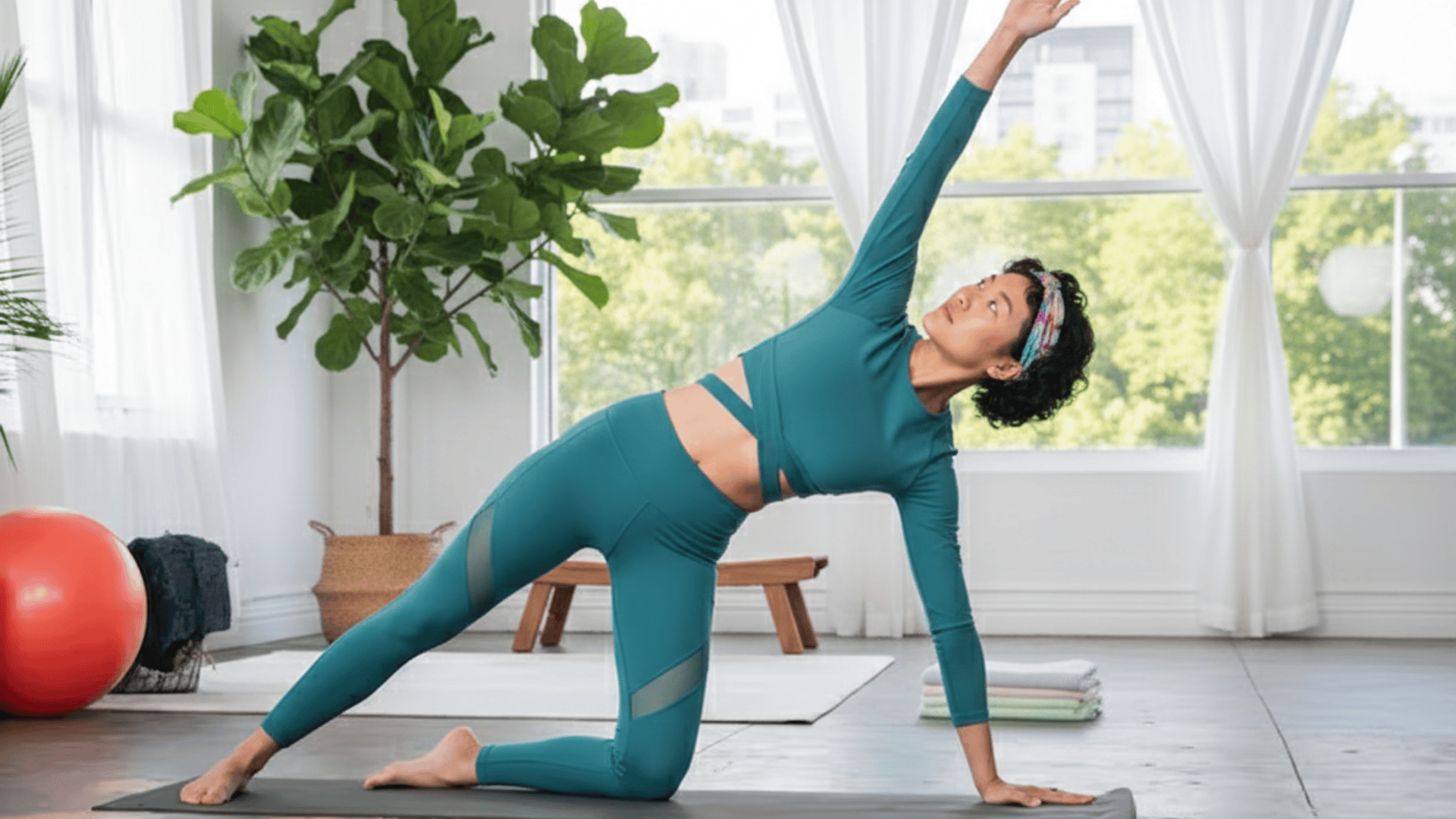
Hot Yoga is Bikram’s more flexible sibling. While it’s practiced in a heated room, the poses and sequences can vary. It provides the benefits of heat without being locked into a specific routine.
The warmth helps your muscles relax and stretch more deeply, but be prepared to find muscles you didn’t know you had and sweat from areas you didn’t know could be affected.
Benefits: Increased detoxification, improved stamina, and increased flexibility as the heat helps your muscles release more easily.
8. Yin Yoga

Yin Yoga is the yoga equivalent of a long, luxurious bath. Poses are held for 3-7 minutes, allowing you to sink deeper into stretches and really release tension that’s been building up in your body.
Most poses are done on the floor with the support of props, targeting deep connective tissues and joints. It’s passive but powerful; your body does the work while you practice the art of stillness.
Benefits: Dramatically improved flexibility, better joint health, and emotional release as stored tension melts away.
9. Restorative Yoga

If Yin Yoga is a luxurious bath, Restorative Yoga is a week at a spa.
This practice is all about deep relaxation using lots of props to support your body in comfortable positions. You might spend 20 minutes in one pose, just breathing and letting go.
It’s incredibly healing for both body and mind, especially if you’re dealing with stress, insomnia, or just the general overwhelm of modern life.
Benefits: Profound relaxation, faster recovery from physical and mental stress, and healing for your nervous system.
10. Power Yoga
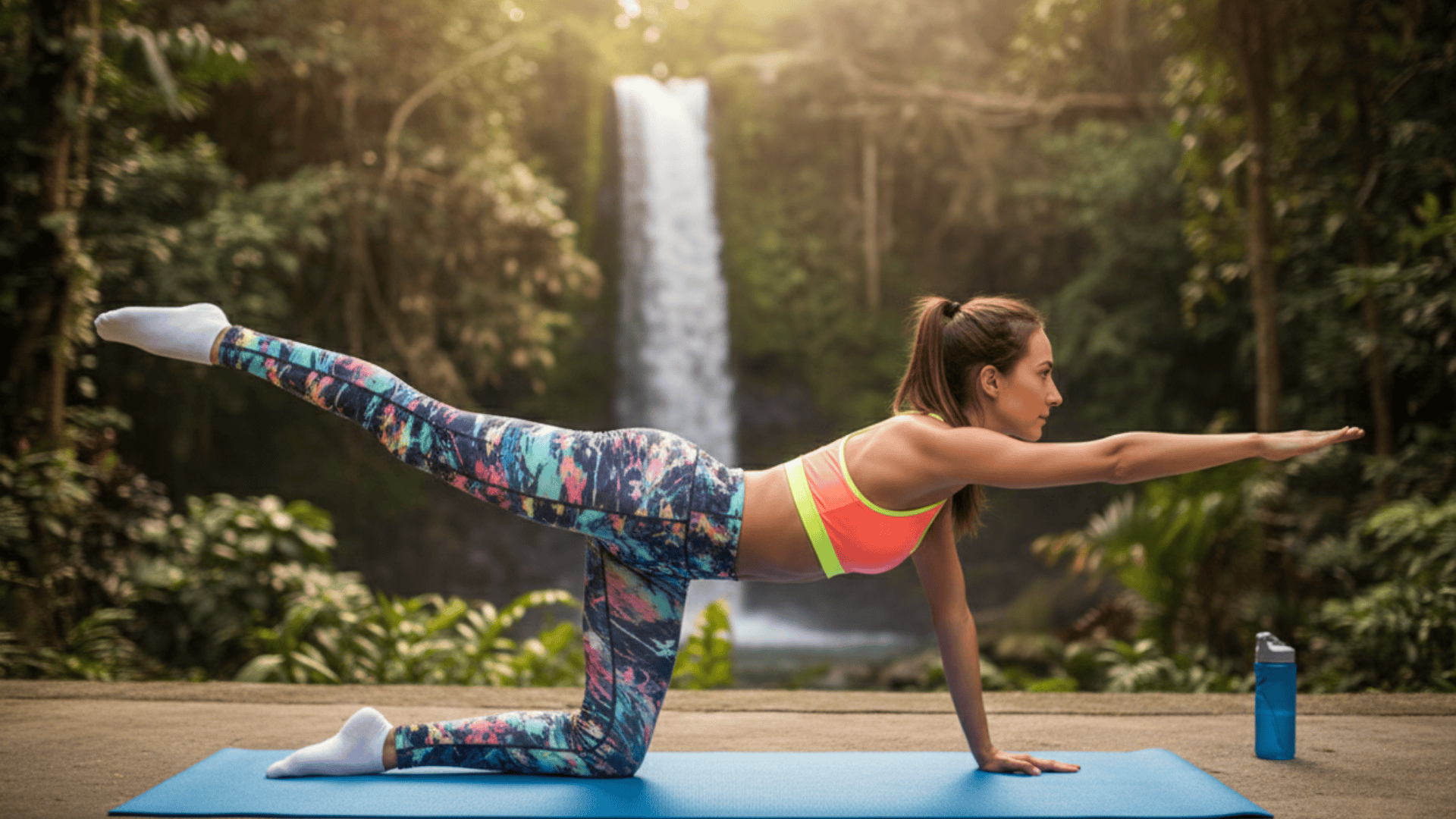
Power Yoga brings the gym mentality to the yoga mat. This fitness-oriented style is fast-paced, challenging, and designed to make you sweat while building serious strength.
Classes often incorporate core work, arm balances, and flowing sequences that will get your heart rate up. It’s perfect if you want the mental benefits of yoga with the physical challenge of a good workout.
Benefits: Cardiovascular benefits, effective weight management, and significant strength development throughout your entire body.
11. Jivamukti Yoga
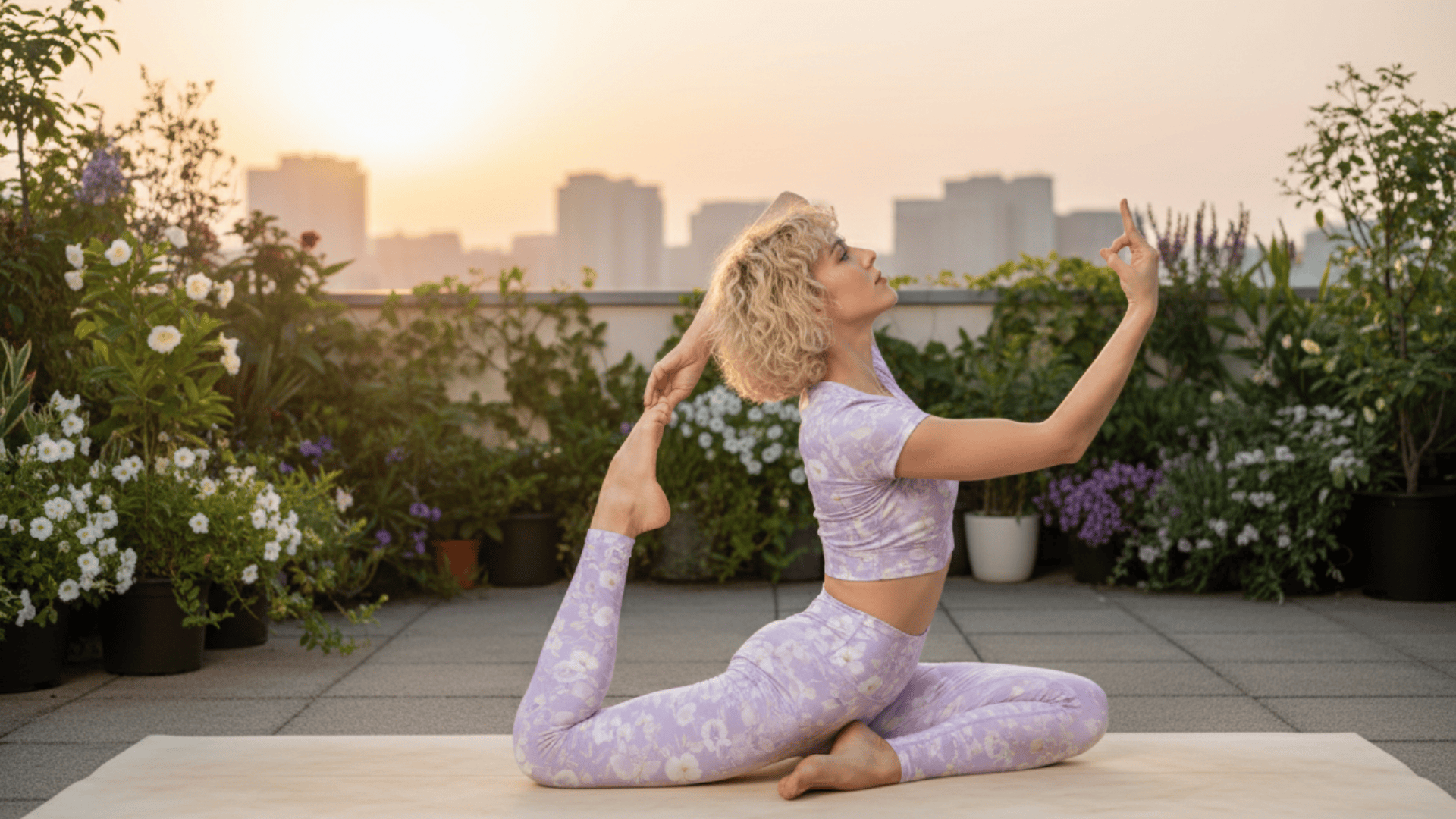
Jivamukti weaves together physical practice with philosophy, music, and spiritual teachings. Classes often include themes based on ancient yoga texts, Sanskrit chanting, and carefully curated playlists.
It’s physically challenging but also intellectually and spiritually engaging. You might find yourself thinking about yoga philosophy long after class ends.
Benefits: Physical toning combined with mental clarity and expanded spiritual consciousness.
12. Anusara Yoga
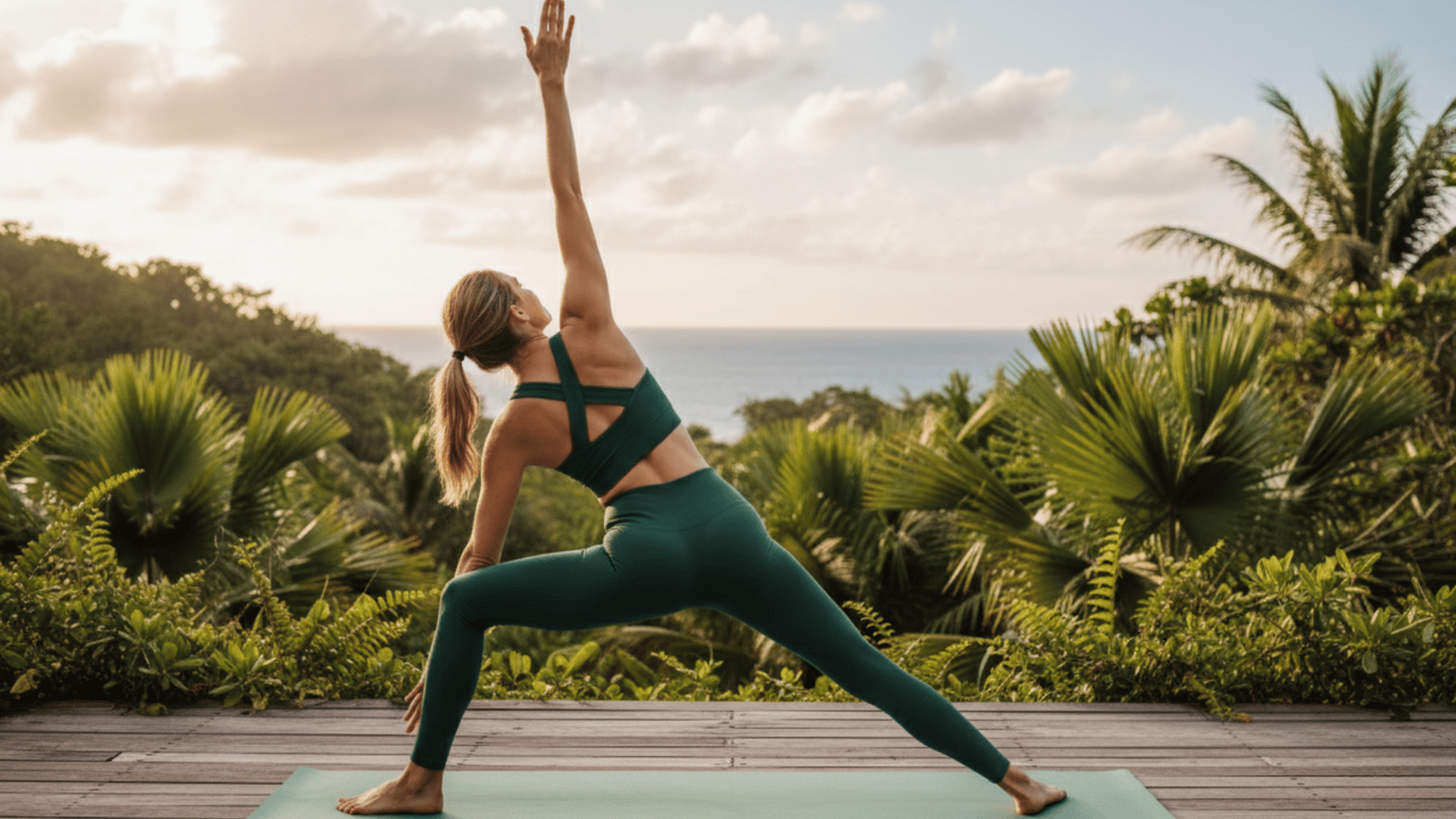
Anusara focuses on heart-opening poses and maintaining a positive, uplifting attitude throughout practice.
The philosophy emphasizes seeing the good in yourself and others, which creates a uniquely supportive class environment.
The physical practice emphasizes proper alignment while encouraging students to express their own uniqueness in each pose.
Benefits: Improved strength with excellent alignment, better posture, and a natural boost to self-esteem and positivity.
13. Sivananda Yoga
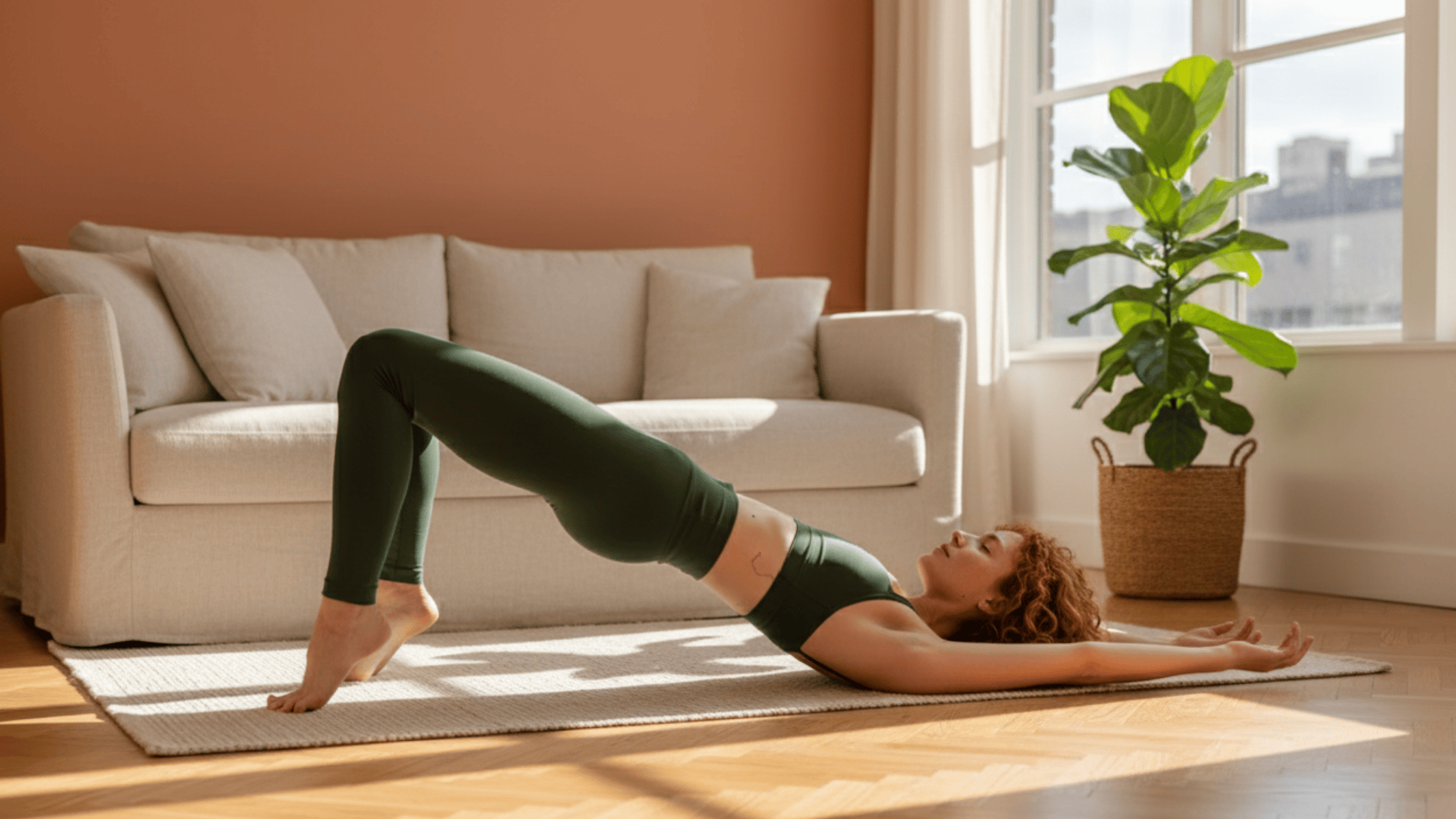
Sivananda is yoga’s holistic approach to wellness. This classical style combines physical postures with breathing exercises, relaxation, meditation, and even dietary guidance.
Classes follow a set sequence of 12 basic poses, but the real magic happens in how all the elements work together to create complete well-being.
Benefits: Comprehensive health improvements, spiritual wellness, and effective stress management through multiple approaches.
14. Kripalu Yoga
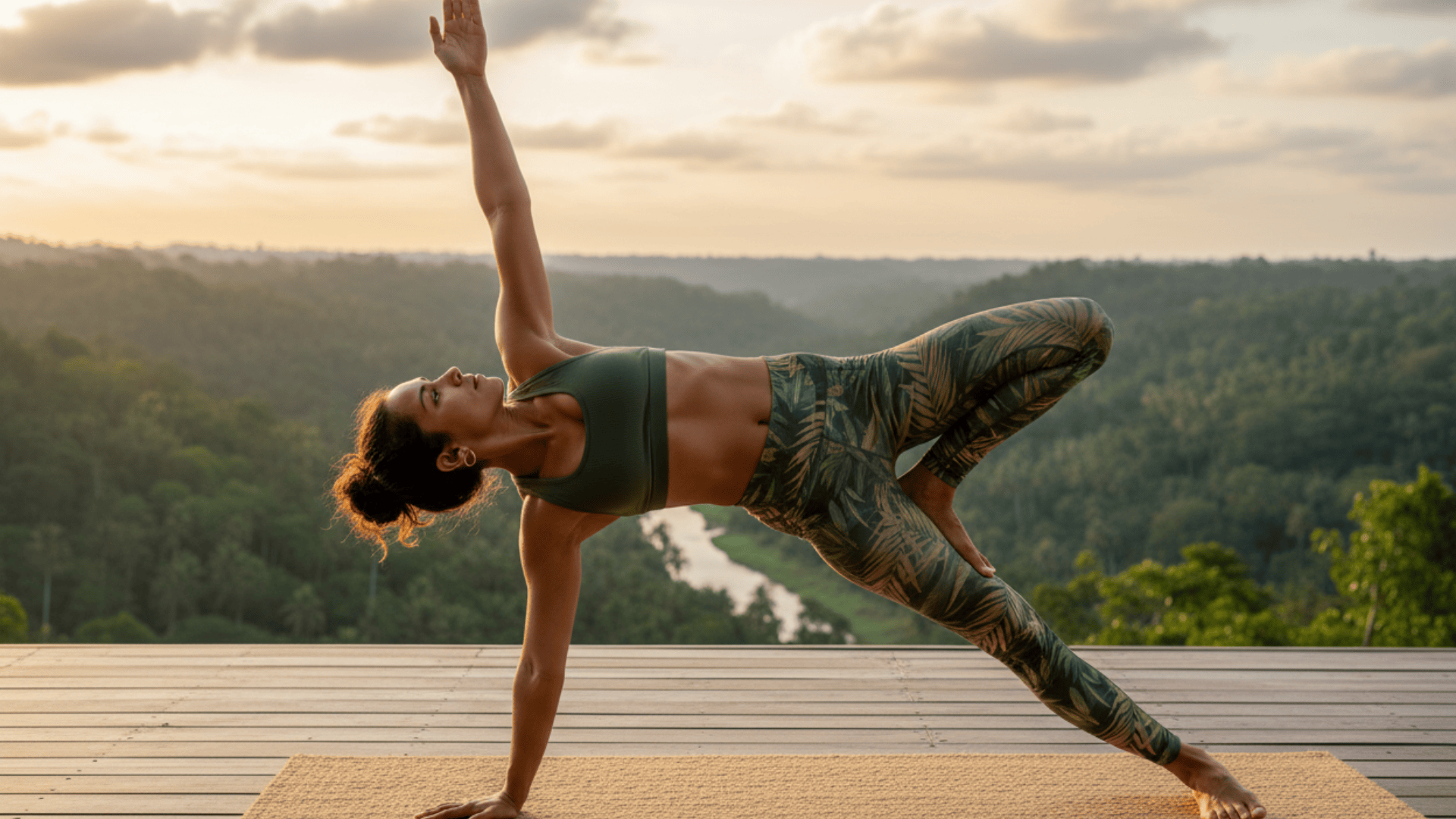
Kripalu encourages you to listen to your own body and practice self-compassion.
This gentle style emphasizes accepting where you are right now, rather than pushing toward where you think you should be.
It’s wonderfully non-competitive and focuses on the inner experience of yoga rather than achieving picture-perfect poses.
Benefits: Better emotional balance, personal growth through self-acceptance, and significant stress relief.
15. Integral Yoga
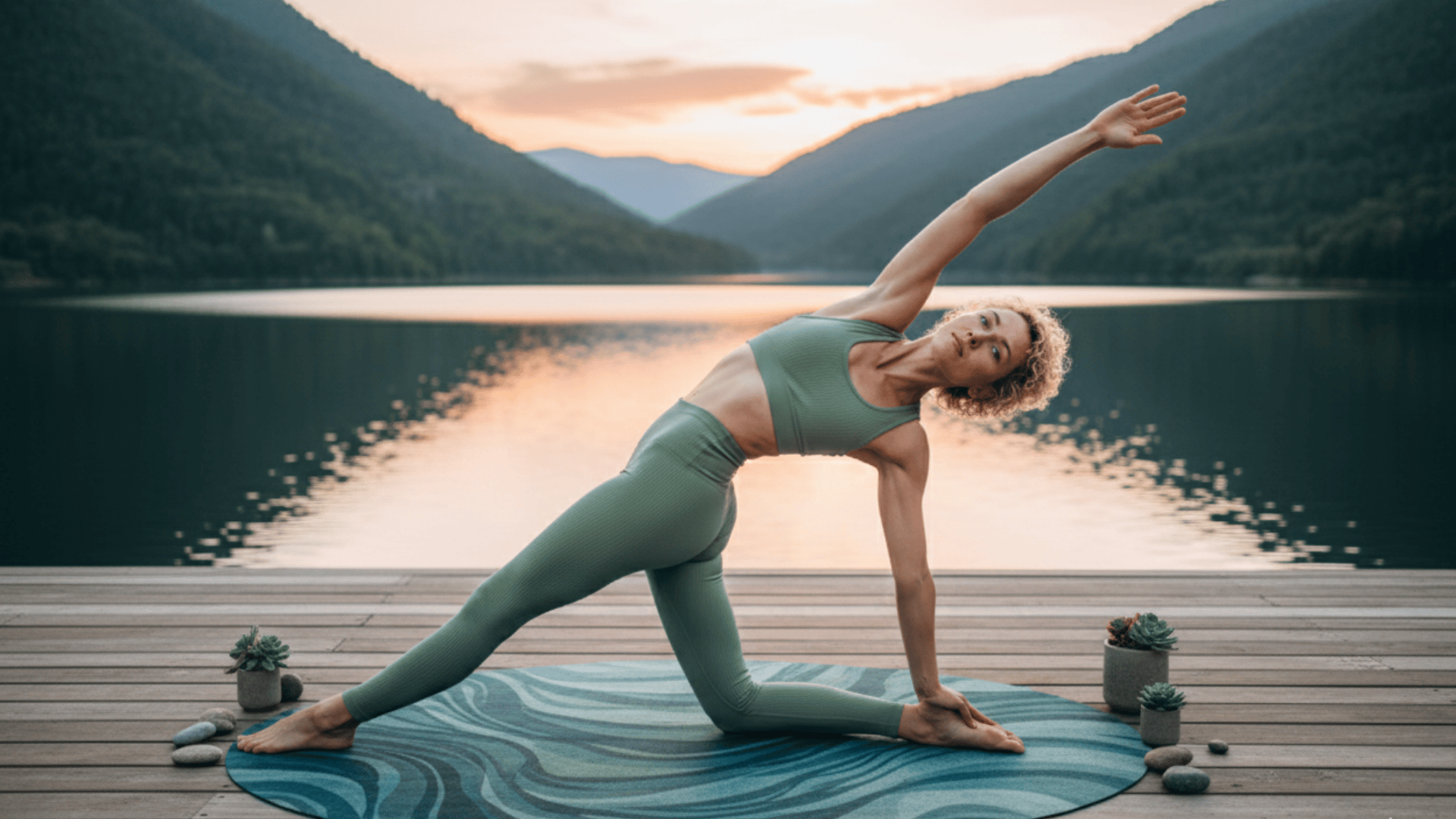
Integral Yoga is like a greatest hits collection of yoga, combining physical postures, breathing practices, chanting, and meditation into a comprehensive practice.
The goal is to integrate all aspects of yoga to create balance and harmony in your entire life, not just during the hour you’re on your mat.
Benefits: True balance of body, mind, and spirit through a well-rounded approach to wellness.
16. Prenatal Yoga
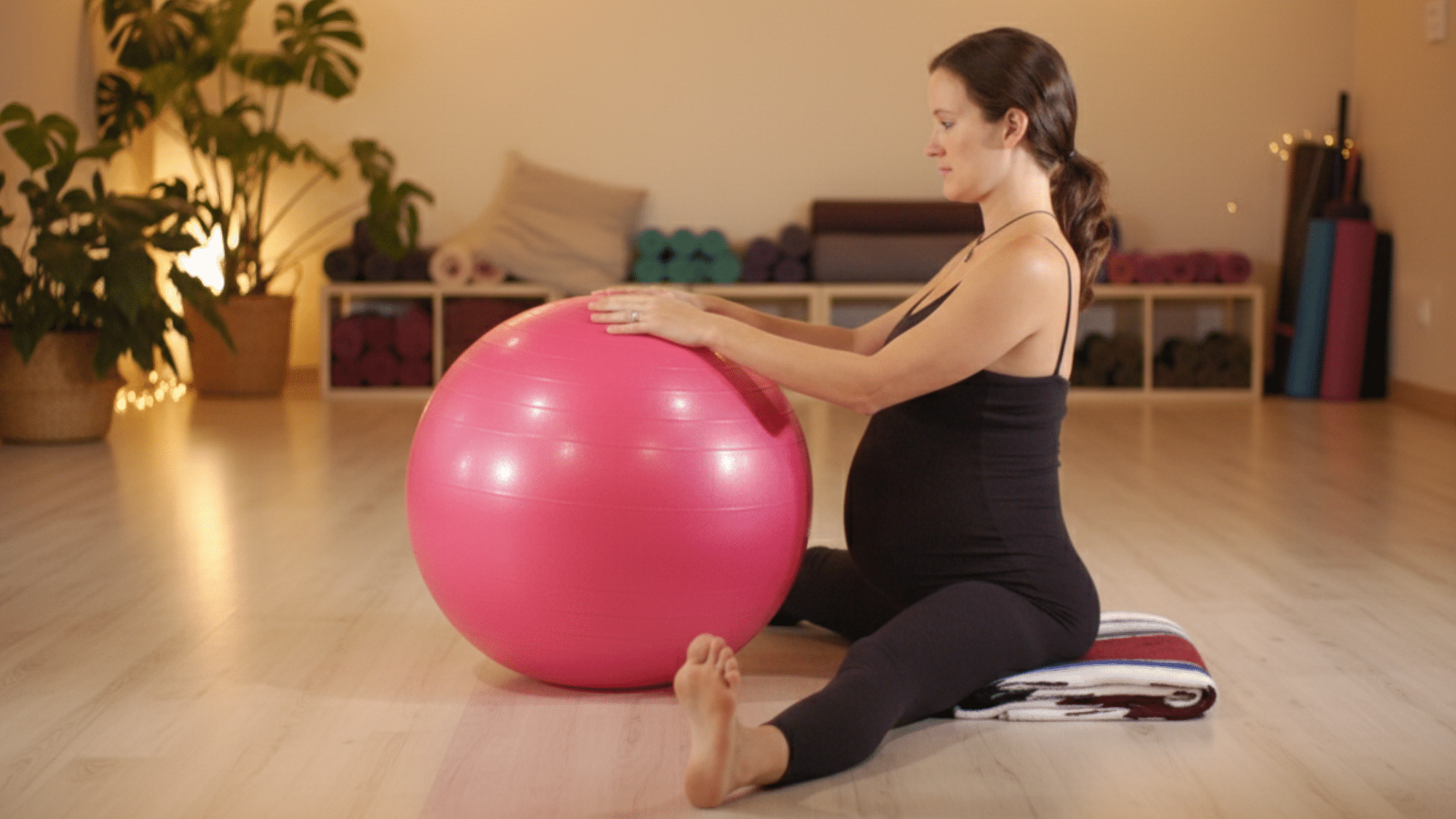
Prenatal Yoga is specially designed for expecting mothers, with modifications and poses that support the changing body throughout pregnancy.
Classes focus on breathing techniques that can help during labor, gentle stretches that relieve common pregnancy discomforts, and building a sense of community with other expecting parents.
Benefits: Relief from pregnancy-related aches and pains, physical and mental preparation for childbirth, and connection with other expecting mothers.
17. AcroYoga
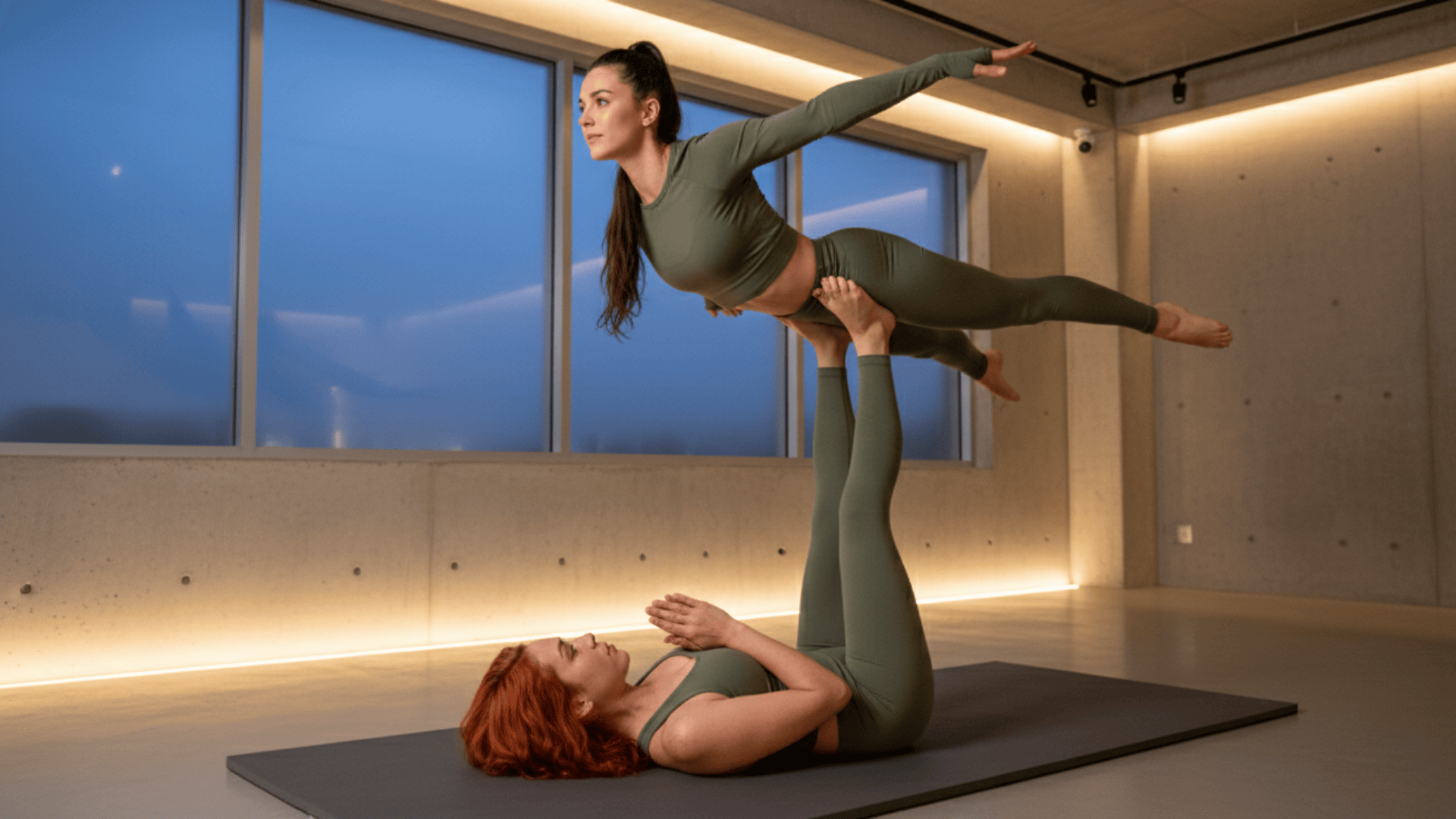
AcroYoga is yoga’s playful, social cousin, combining traditional yoga with acrobatics and Thai massage. You’ll work with a partner, taking turns being the “base” (on the ground) and the “flyer” (in the air).
It requires trust, communication, and a sense of humor when things don’t go as planned. It’s challenging but incredibly fun and bonding.
Benefits: Builds trust and communication skills, develops serious core strength, and creates joyful social connections.
18. Aerial Yoga
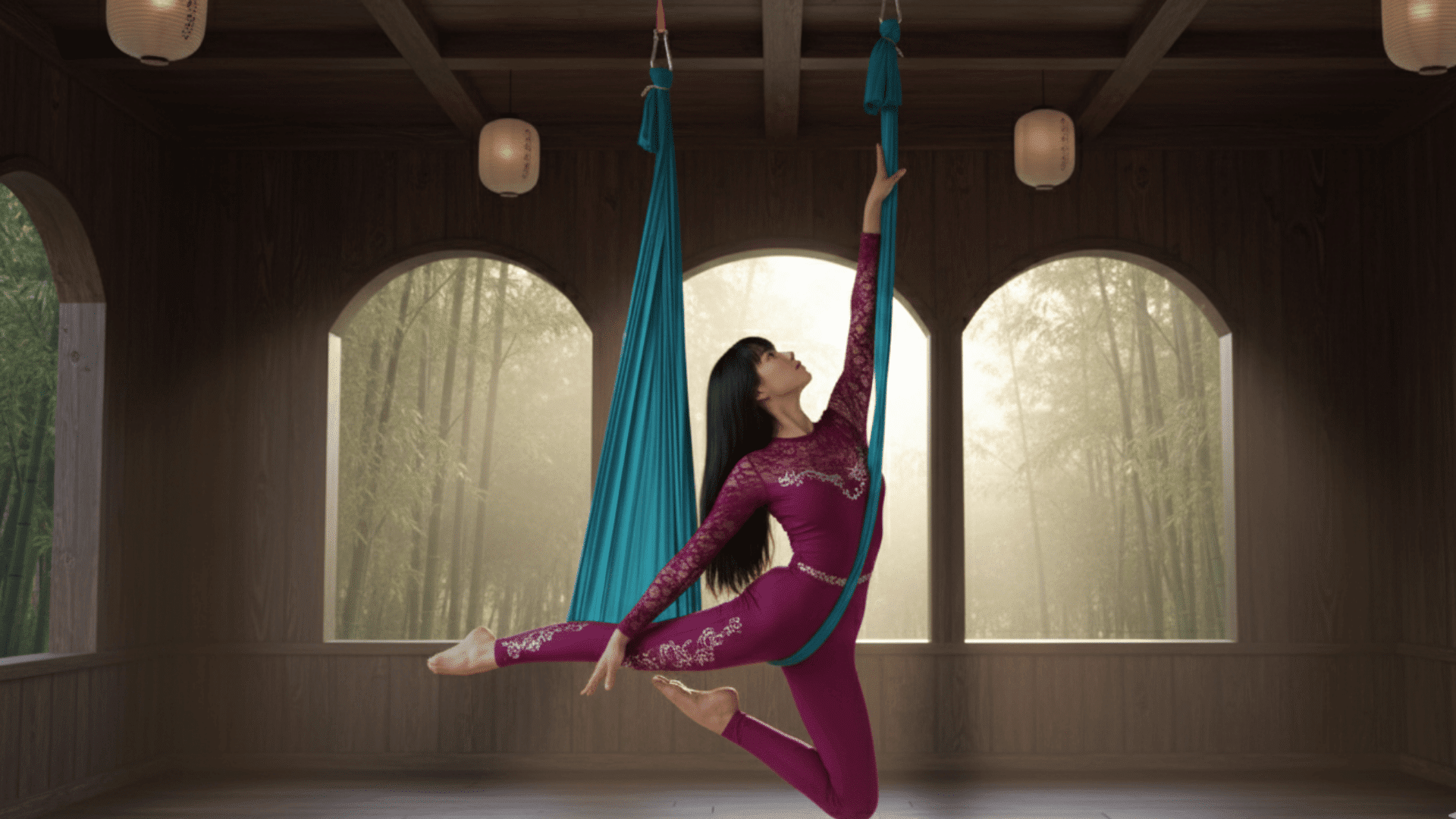
Aerial Yoga uses silk hammocks suspended from the ceiling to support your body in traditional and inverted poses. It feels like flying while getting a good workout.
The hammock supports your body weight, allowing you to go deeper into poses and experience inversions safely, even if you can’t do a headstand on the ground.
Benefits: Spinal decompression from gentle inversions, core strengthening, and increased flexibility with reduced joint pressure.
19. Chair Yoga
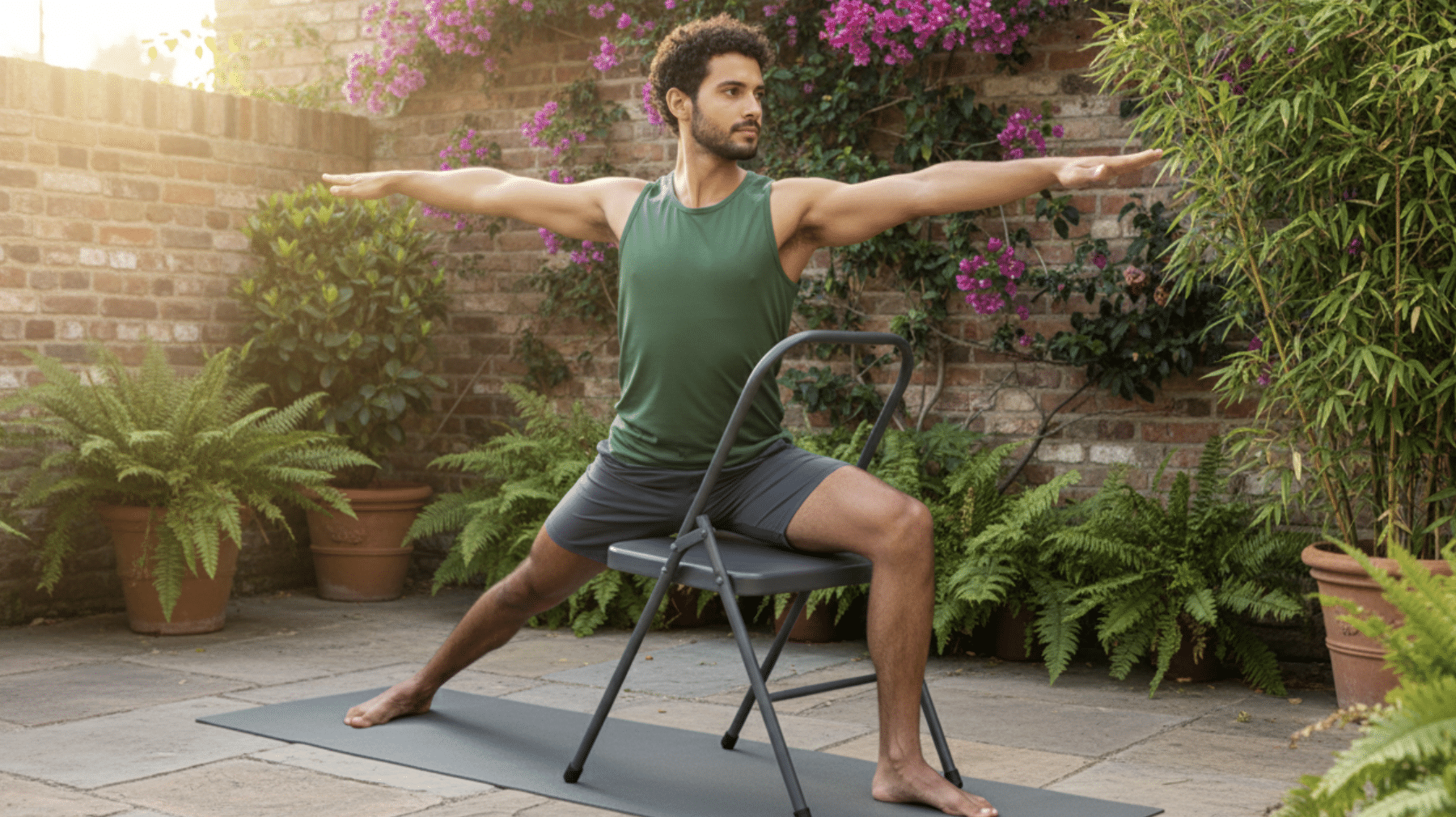
Chair Yoga adapts traditional poses for people who have difficulty getting up and down from the floor or need extra support. It’s perfect for seniors, office workers, or anyone with mobility limitations.
Don’t let the chair fool you; you can get a surprisingly effective workout while improving flexibility and strength, all while staying seated or using the chair for support.
Benefits: Improved joint mobility, better blood circulation, and yoga accessibility for people of all physical abilities.
How to Choose the Right Type of Yoga Classes?
Choosing the right yoga style is like picking the perfect coffee order; it depends on what you need and what you enjoy. Here are some things to consider:
- Your Fitness Goals: Want to build strength? Try Power Yoga or Ashtanga. Looking for flexibility? Yin Yoga might be your match. Need stress relief? Restorative or Hatha could be perfect.
- Your Current Flexibility: If you’re stiffer than a board, start with gentler styles like Hatha or Restorative before jumping into advanced practices.
- Spiritual Interests: Some people want pure physical exercise (Power Yoga), while others crave the spiritual elements (Kundalini or Jivamukti).
- Health Considerations: Pregnant? Try Prenatal. Recovering from injury? Iyengar’s alignment focus might help. Limited mobility? Chair Yoga is fantastic.
- Beginner Tips: Start slow, try different teachers even within the same style, and don’t be afraid to use props or modify poses. Most importantly, listen to your body; it’s smarter than you think.
Consider mixing active styles with restorative practices for the perfect balance of challenge and recovery.
Wrapping It Up
Now that you’ve found these incredible yoga disciplines, I encourage you to trust your gut and just start!
There’s no need to find the “perfect” style right away, just pick what sounds most appealing to you right now.
You might fall head-over-heels for Ashtanga’s intensity, or find that combining relaxing Yin with dynamic Vinyasa is exactly what your soul needs.
Here’s what I love most about yoga: it welcomes you exactly as you are today. Your body will feel stronger, your mind will find peace, and you might just stumble upon a practice that changes everything.
Ready to find your yoga soulmate? I dare you to book that first-class ticket this week; your future self will thank you!

